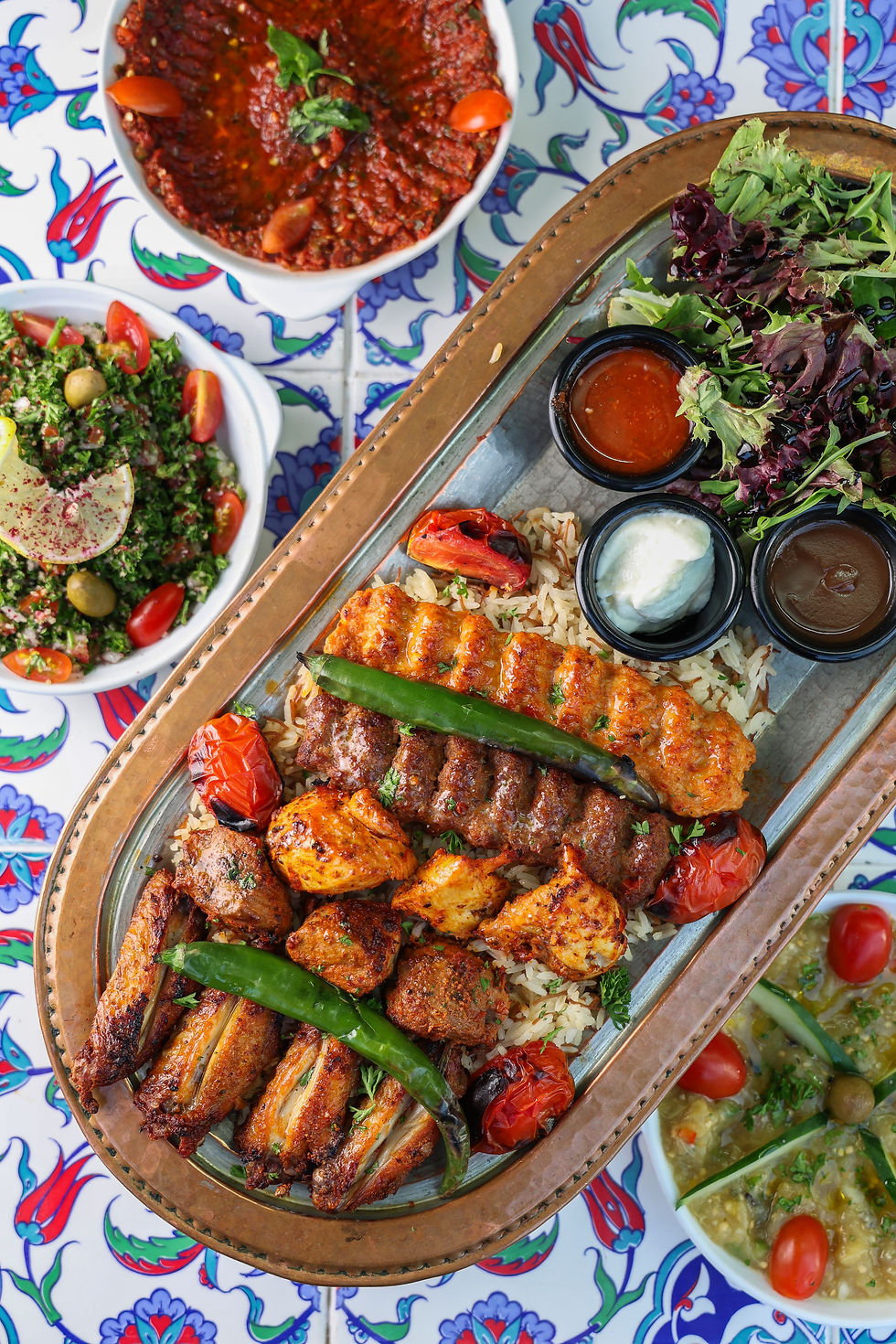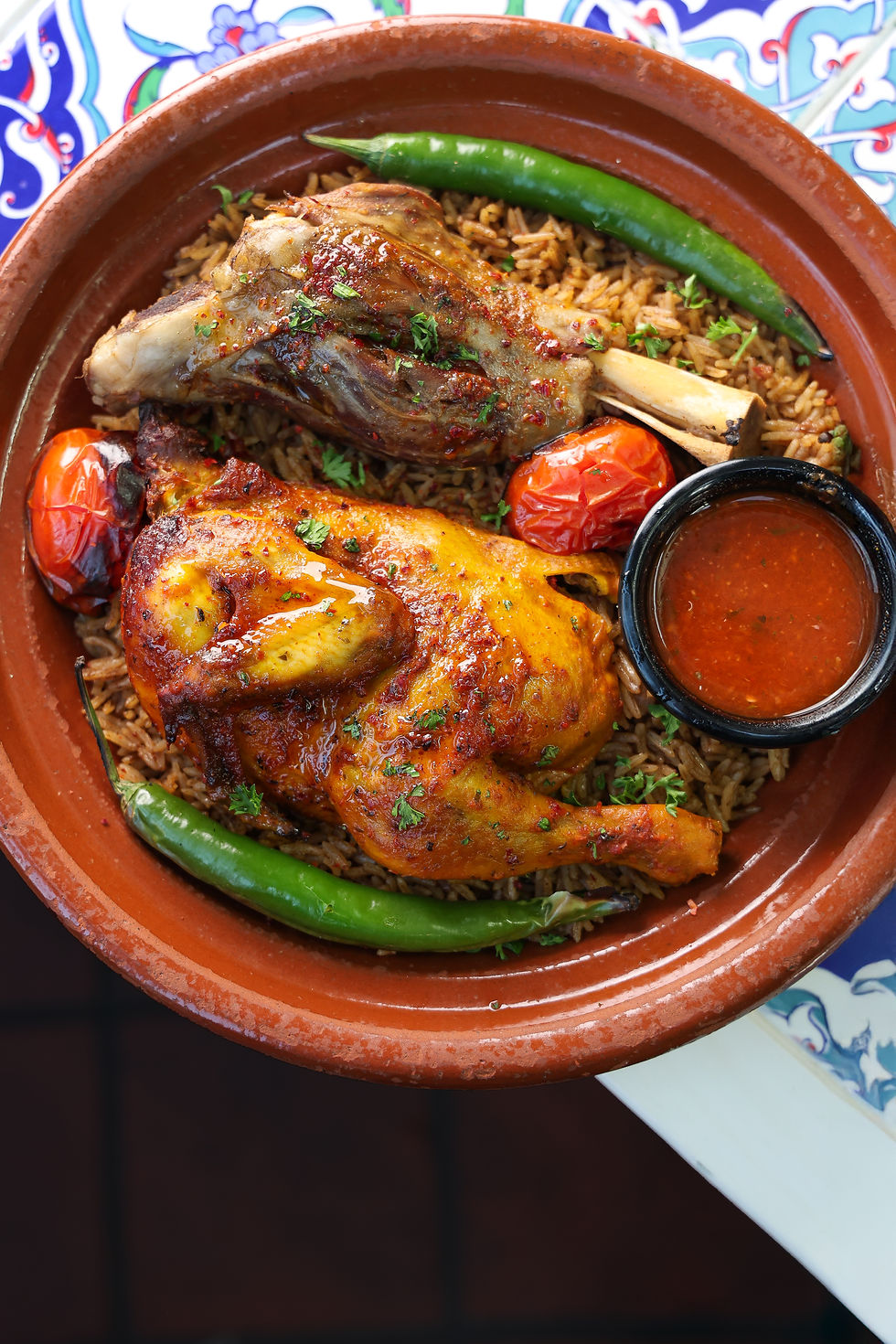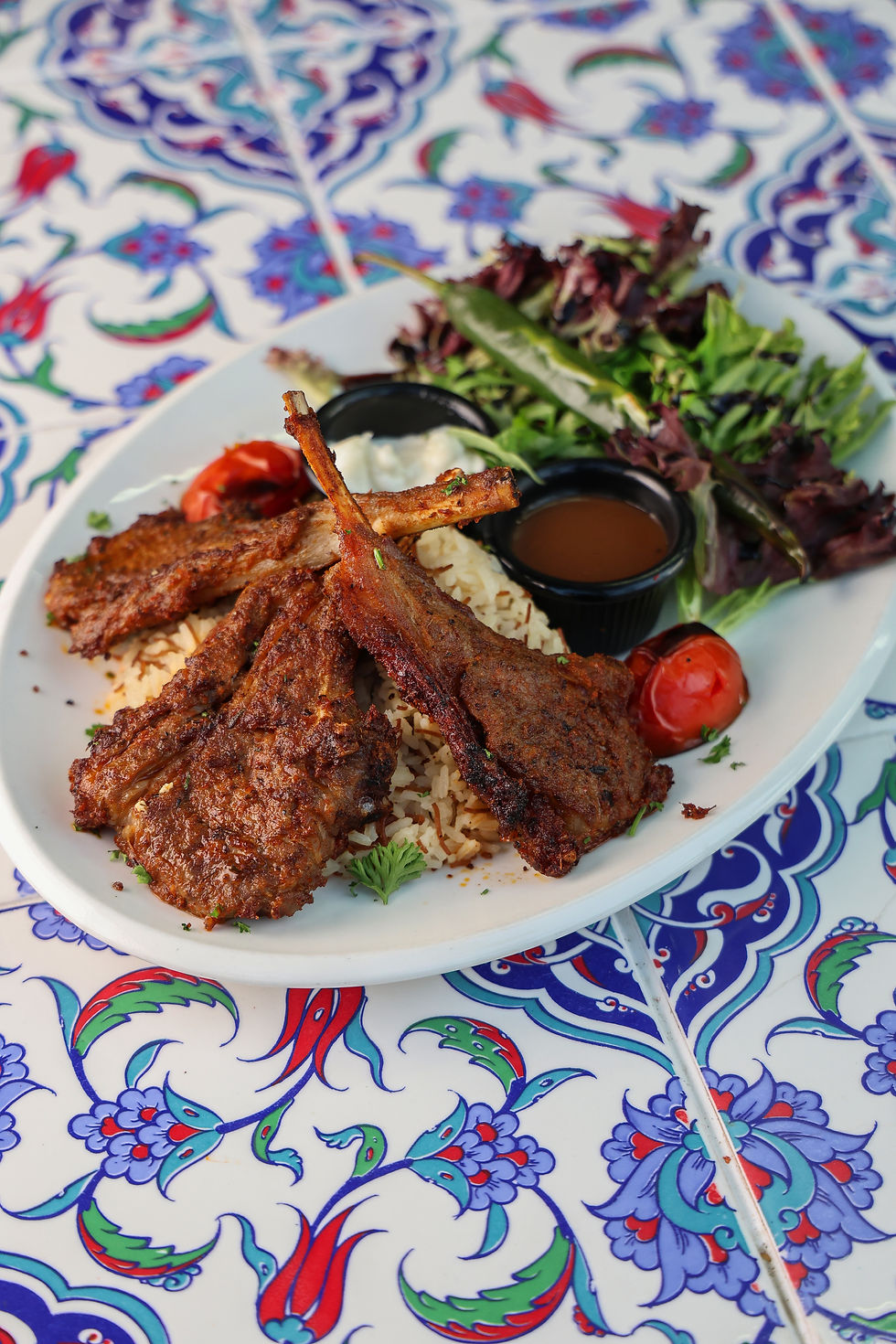Exploring the Rich History of Turkish Food
- cappadociasg
- Jul 2
- 4 min read
Turkish food is more than just a cuisine; it is a vibrant tapestry woven from centuries of culture, tradition, and history. The flavors, aromas, and textures found in Turkish dishes tell stories of the country’s diverse influences and historical treasures. From its roots in ancient nomadic tribes to the modern kitchens of Istanbul, Turkish food has evolved into a culinary journey worth exploring.
Turkish Food: A Fusion of Cultures
Turkey is a bridge between Europe and Asia, and its food reflects this geographical and cultural blend. The Ottoman Empire played a significant role in shaping Turkish cuisine, introducing a variety of spices, herbs, and cooking techniques. Traditional Turkish dishes often combine elements from Middle Eastern, Mediterranean, and Central Asian cuisines.
For instance, kebabs, which originated from Central Asia, have become a staple in Turkish food. They are typically made from marinated meat grilled on skewers. In contrast, dishes like mezes showcase the Mediterranean influence, presenting an array of small appetizers including hummus, stuffed grape leaves, and tzatziki. The variety found within a Turkish meal demonstrates how the cuisine harmoniously brings together diverse culinary traditions.

Signature Dishes of Turkish Cuisine
One of the most iconic elements of Turkish cuisine is its signature dishes. These dishes are often steeped in history and showcase the bounty of local ingredients.
Kebabs: As previously mentioned, kebabs come in many forms, such as Adana kebab and Şiş kebab. Each region of Turkey boasts its unique recipe, often passed down through generations.
Dolma: This refers to vegetables, usually grape leaves or peppers, stuffed with a mixture of rice, pine nuts, and spices. The preparation of dolma varies significantly between different regions, highlighting local flavors.
Baklava: A sweet pastry made of layers of filo dough filled with chopped nuts and sweetened with honey or syrup. It is a dessert synonymous with Turkish hospitality and celebration.
What makes these dishes special is not just their flavors but the stories they carry with them. Each recipe has a rich narrative, connecting families and communities across generations.

The Role of Spices in Turkish Food
Spices are an integral part of Turkish cooking, reflecting the nation's rich history as a crossroads of trade. The Silk Road passed through this region, bringing with it a variety of spices that would significantly impact the local cuisine.
Commonly used spices include:
Cumin: Often used in meat dishes and lentil soups.
Paprika: Adds warmth and color to many sauces and stews.
Mint: This herb is prominent in salads and alongside meats.
Many Turkish dishes would be incomplete without these spices. They enhance flavors, preserve food, and contribute to the overall experience of enjoying a meal. Understanding the role of spices helps in appreciating Turkish food’s complexity and depth.
The Evolution of Turkish Food
As societal structures evolved, so did Turkish cuisine. The introduction of new ingredients from global trade brought changes in cooking styles and food popularity. Today, Turkish food blends modern cooking techniques with traditional recipes—creating an exciting fusion.
The rise of the café culture and the growing prominence of street food also demonstrate this evolution. Dishes such as simit (sesame-covered bread) and döner (sliced meat served in a wrap) have become convenient options loved by both locals and tourists.
Moreover, modern Turkish chefs are experimenting with flavors and presentation, pushing the boundaries of traditional recipes. This blend of innovation and heritage keeps Turkish food alive and relevant in today's gastronomical world.

How to Experience Turkish Food Today
To truly appreciate Turkish food, one should explore it personally. Here are a few ways to do this:
Visit a Turkish Restaurant: Dining at a Turkish restaurant is an excellent way to experience authentic cuisine. Look for traditional restaurants that offer a wide range of dishes. For instance, Cappas, a well-known Turkish restaurant, has a fantastic selection of authentic Turkish food for all tastes.
Cooking Classes: Participating in a cooking class can be a fun and educational experience. Many local chefs offer courses that teach you how to prepare classic dishes while sharing stories about their cultural significance.
Food Tours: Consider joining a food tour in cities rich in Turkish cuisine. This will allow you to sample various dishes and learn about their history from knowledgeable guides.
Understanding and tasting Turkish food is not just about eating; it’s about connecting with the culture and history of this captivating region.
Continuing the Culinary Journey
Turkish food continues to allure with its dazzling flavors and rich history. The fusion of different culinary traditions, the importance of fresh ingredients, and the story behind each dish make the experience of Turkish cuisine unique.
As you venture into the world of Turkish food, take the time to explore the historical context behind the dishes. Whether enjoying a hearty kebab or indulging in sweet baklava, remember that each meal is part of a larger narrative—one that spans centuries and crosses cultures.
In embracing Turkish cuisine, we hold onto the stories and traditions that make it what it is today—a celebration of history, community, and ultimately, love for good food.




Comments